Kiss Endre
"Who thinks Central Europe?"
The Austrian Intellectual History up to the First World War
 |
| Friedrich Hegel |
That our initial question be borrowed from Hegel ("Who thinks abstractly?"): "Who thinks Central Europe?"
Is it the valiant soldier, Jaroslav Haseks Schweik, who, on the train to the frontline during the First World War, pulls the emergency brake? Or is it Franz Kafka, who thinks Central Europe, while he represents, in his novel America, a young man, who avoids every possibility with a sleepwalking assurance, that could lead to the fact, that he is accepted in the new, American family and is simultaneously undressed of his Central-European identity? Or is it just the Hungarian Imre Csécsy, who interpreted in the thirties Stalin’s silence as the sign of the worst crime?
 |
 |
 |
||
| Jaroslav Hasek | Franz Kafka | Csécsy Imre |
An overview of the Austrian history of ideas gives however an image of the striking continuity. It can however be satisfactorily explained with historical and sociological reasons.
The emancipatory-liberating movements of the European social history are rejected three times by this state, or fundamentally modified. The glaringly obvious continuity of this ideological-historical development would be, without this political-socio-historical background, apparently not simply total, but also ideal, typological and/or historical. The tenacious survival of qualifying thought structures would be the triumphant confirmation of the conceivably toughest program of the scientifically and theoretically most conscious intellectual history.
The triumphant phenomenon of the spiritual history can then – and it is the case in this context – also be aroused, or motivated by a specific social history.
The refusal, or the modification of the three most important emancipatory currents (from the Protestantism up to the German Idealism and the Romantic philosophies of the Vormärz), that might be called universal challenges of highest degree, reject in this dimension a braked and controlled social history.
In this qualification, there is no immediate value judgment, rather a necessary historical insight. Our aim is not to disqualify this historical development in comparison with others (all the more less, because precisely this background certainly not favourable in itself also contains hypotheses, that enabled the characteristic size of the modern Austrian culture). This attitude is necessary, in order that the interweaving duality of the ideological-historical continuity and restricted social history be visible.
It is obvious, that the discussed problematic simultaneously updates that of the "classicity", or "non-classicity" of a social development. We are conscious of the fact, that precisely the latest political and social phenomena bring a large number of new questions and thus also set the theoretical significance of this "classicity" in a new context.
We are invariably convinced, that we can operate with a meaningful and reasonable application of the concept of classicity. It follows, that the briefly outlined characteristic of the Austrian social history is a non-classical one.
The triple rejection of the progressive-emancipatory challenge led to a certain constancy of thought structures, which continuity would be otherwise only thinkable as product of a forced spiritual-historical mode of consideration. The so emerging complexes of ideas revealed in the course of the development also as identity-building, and indeed as well outwardly as inwardly.
This would arouse the appearance, that the old identity structures of harmonistic thought structures would be innerly capable in their average, to bear also important modern initiatives.
Now, that is not the way. What is true in this assumption is, that many modern initiatives, that consider our modern cultural consciousness rightly as "specifically Austrian", occurs in front of the background of this harmonism, or in interaction with it.
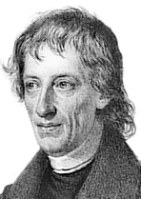 Bernhard Bolzano |
The relationship is not causal, let alone genetic. The harmonism builds undoubtedly a certain background, a system of evidences, which mostly belongs to those, that do not become thematical in the core of the individual questions. Bernhard Bolzano’s and FranzBrentano’s conceptions deserve a particular attention, which, propping up on the universalism, created significant philosophies. Both did not do it in an explicit confrontation with the enlightened positivism revealing later as so important. |
 Franz Brentano |
Both approaches were common in the fact, that they could mobilize effectively very universalistic contents and applied also still fruitfully in the development of philosophical positions.
In the course of the historical development, the harmonism is not superseded polemically by the modern currents par excellence, it is its rear-guard fight against a complex of positivist, liberal and enlightened ideologemes in the second half of the century.
To describe this complex, we chose the term >>Second Enlightenment<<. This comprehensive mode of thinking combatting the harmonism, was carrying like mechanically the whole process of the industrialization in this domain, had politically a fundamentally liberal visage, was leaning scientifically upon a methodologically conscious positivism and won its prominent enlightened character from its tenacious struggle against the harmonism really articulating mostly in the form of the religion. It founded the image of the world, the entrepreneurial bourgeoisie and was carrying, also for this reason, immediately a decidedly political note.
The Second Enlightenment was carried by a new world of media, designed on its part this new world of media also quite effectively. It was mainly carried by the daily press, by this revolutionary medium of the time, which also conveyed a positivist image of the world, even a positivist cultural criticism and philosophy with a hitherto non presumed effectiveness.
In the Austrian-Hungarian dimension, this modernization had also the consequence, that thus also the German language, the German and German speaking culture, in many translations, but also the whole new European culture tremendously quickly could be achieved from one end to the other of the continent. For Austria-Hungary, but also for the whole Europe of that time, that the German language could fulfil so adequately its mediation function, revealed as a decisive cultural-sociological fact.
Cultural domains such as Scandinavia or Russia were thus suddenly focussed and in all other domains rapidly admitted. Our today concept of Europe was born.
 |
| Josef Popper-Lynkeus |
As one of the most important fundamental oeuvres, taken in the ideological-historical point of view, this >>Second Enlightenment<< of the Austrian-Hungarian region applies in this project of Josef Popper-Lynkeus’ Voltaire. The choice of thema evoking the Great Enlightenment allows to consider the Second Enlightenment under a particularly favourable aspect. The hinted connection between positivism and the Second Enlightenment is totally symbolized in the own person of the engineer Popper-Lynkeus.
 |
| Sigmund Freud |
The result of his conception is a new grouping of elements of the original philosophy of the Enlightenment: his freethinking is distinguishing from the revolutionary possibilities, his program of reorganization adopts trains of the future social planning or technocracy, his interest in the immediately human issues leads to the anticipation of the interpretation of the dream, that Sigmund Freud fully recognized later.
 Friedrich Jodl |
Friedrich Jodl’s anthropologism belongs also to this Second Enlightenment. His following of Ludwig Feuerbach makes now visible, from this orientation, as well the positivist as also the enlightened velleities of the German philosopher. Jodl’s direct and intensive interest in the concrete-human reminds of Popper-Lynkeus’ version, what – with a certain abstraction – is considered as positive base of orientation of a no longer religious universe. |
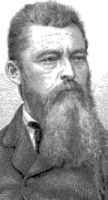 Ludwig Feuerbach |
 |
| Max Nordau |
A quite new philosophical intention, the so-called >>cultural criticism<< generated by the way also from the >>Second Enlightenment<<. This mode of thinking was articulating (obviously going partly back to the Viennese predecessors) for the first time in Max Nordau’s quite disputed and effectively antinomic lifework. The positivist-enlightened cultural criticism wanted to make a practical use of this philosophy, it wanted to become, so to speak, the >>praxis philosophy<< of this direction. From the analysis of this practice, the diverse contents of this cultural criticism can be immediately exploited in their genesis and function. The criticism of the religion, that adopted in some places direct enlightened dimensions, and represented also directly polemical positions, belonged fundamentally to this criticism, it continued however also in the direction of a largely constituted sociology of the knowledge (Wissenssoziologie), while it was enquiring about the motivations, genealogical dimensions of the religious consciousness. This attitude provided the positivism with a note, that it roughly never more had to exhibit in other, mainly typical Western cultures.
The positivism, that we considered either as a scientistic direction without any own philosophical message or as more or less a direct apology of the bourgeois society, is revealing (amongst others) also in this cultural criticism as a direction with social message. Now, this social message is limited >>to the left<<, what can however be explained by the miscellaneous given circumstances. The cultural criticism became in fact a practice, in which its representatives have made in principle of all phenomena, however mainly of artistic-cultural ones the object of their criticism transforming the society. One of the first positivistically engaged cultural critics of this kind was Max Nordau. From a certain distance, it is clear what kind of function this aggressive cultural criticism had to appropriate itself in an environment of the harmonism and which it appropriated. It is about the >>irruption of the reflection in the world of the universalism<<; the dimension relativizing all absolutes banished the harmonistic mode of thinking always more strongly from the midst of the Central European consciousness. So, in the eighties a mutation occurred in the prevailing mode of thinking, caused by the positivist cultural criticism.
 |
| Karl Kraus |
Here, a ramification of this direction is founding: on the one side, it develops in the direction of the liberally enlightened-relativizing journalism from Max Nordau up to Karl Kraus also far into the later time and on the other side in the direction of an academical specialized scientific positivism, that is characterizing by the fact, that it selects – with its correctly applied scientistic means – extremely topical issues as object of investigation.
 Ludwik_Gumplowicz |
Gumplowicz, Ratzenhofer, Pribram and others develop items such as colonization, social legislation, historicity and other similar burning contemporary problems, in which we see without any difficulty a specific train of the Austrian positivism. In other bourgeois societies, the positivism played certainly a system-stabilizing role (although our today average vision is very simplifying in this context), in Austria it had however a social dimension, that conferred it a >>progressist>> side. It seems also to be detectable, that also Sigmund Freud’s psychoanalysis has its origin in this specific kind of the Austrian positivism, it must so remain always problematic to positivistically identify the primary representational contents of the psychoanalysis (namely language and ideas of the psychoanalyzed). |
 Gustav Ratzenhofer |
The representational nature of the exploration of inconscious contents might however not obscure the essential identity of both methodological processes.
The enlightened positivism was accomplishing as well in its general publicistic as also particular scientistic type a thorough work harmonism, the universalism disappeared from the intellectual consciousness, but also the positivism itself was in danger of being overcome and evicted by its sons.
We can here speak of sons in two senses. On the one side, it is about numerous representatives of the new major direction, of the impressionism, about biological children of the positivist founder generation (that were in possession effectively of the societal authority for certain and easy to clarify socio-historical reasons).
 Hermann Bahr |
The positivist father begat usually an impressionist as son. On the other side, it is legitimate to speak of the >>sons<< also in the figurative sense. For, also from the logic of the intellectual development, this jump is not difficult to explain. We do not think only of such direct references, like Hermann Bahr did it with Ernst Mach’s positivism of the >>hopelessness Ego<<, rather of the fact, that a movement, with the colors of the generation problems, in some places oedipal-motivated, anti-authoritarian, of the second generation of the scientifically-engaged order of the things, opposes an impressionnist order, built on the spontaneity and inner deployment of the personality. |
 Ernst Mach |
In fact, the impressionist way of thinking appears in the post-positivist era in a whole variety of shadow zones. Since about the century turn, it can be however spoken of a post-positivist period only in the sense, that we keep in mind the contents of the consciousness of the intellectual elite groups. The triumph of the impressionism led namely for long not yet immediately to the eviction of the positivism out of the science and other domains.
 |
| Sören Kierkegaard |
The Austrian-Hungarian impressionism takes a quite peculiar structural position. Firstly, it revealed as an extremely vital everyday thinking and contributed to the strengthening of the spiritual identity of this region. On the other side, all other directions judged themselves by it, and the impressionism came also in this way, even still in its negations and conquests, to an unparalleled omnipresence. The everyday impressionism adopted trains, that remind directly of the aesthetic stage of the Sören Kierkegaard. (It is another matter and certainly no coincidence, that Kierkegaard be received in this period in several waves in Austria).
 Arthur Schnitzler |
If we want to correctly comprehend Arthur Schnitzler’s importance in the course of the Viennese Impressionism, we see that it is in the often clinically exact representation of this consciousness structure and life problematic. The fixation on the >>moment<<, stuck in the prodoundness of every impressionist world vision, appears as the true and only comprehensible basic unit of every life, as well in the thinking as also in the literature, most obviously however in Peter Altenberg’s extracts of life. Just this existential importance of the moment causes, that the Viennese impressionist mode of thinking par excellence is worked up in so miscellaneous articulation forms such as the Belles Lettres, poetry, essay or philosophy. The fully elaborated impressionism of an Hermann Bahr, quite erected to an existential niveau, already leads from the existentiality to the cultural criticism, who raises the openness, the relativism, the existentiality and the identification gift of this mode of thinking to literary standards, even norms. And again, we stand in front of a phenomenon, which general cultural and historical importance is hardly to estimate. It is the impressionist, literary and cultural criticism, which Austrian-Hungarian version could be rightly compared with the French one. |
 Peter Altenberg |
 |
| Otto Weininger |
The impressionist existentiality has a natural inclination, so to speak, a short way to the tragic, the latter is included in it. However, this affinity is manifesting only rarely so clearly as in Otto Weininger’s Sex and Character. This oeuvre might be indeed probably called also scientific; but there is however no doubt, that Weininger, in his apparently scientific discourse, is look for uniting with each other important complexes, not relating to each other, of the impressionist mode of thinking and reconstructs it even as system.
We think that, above all, the controversial complementary attitudes of the existential questioning of the strict scientific character, of the simultaneous cult of the moment and of the genius, excluding each other almost necessarily for objective reasons, are the profound tragic consternation and the therapeutic nihilism. Considered individually, but also in couples of opposites, they are identical to the qualifying basic convictions of the impressionist thinking and life forms, they are systematized by Weininger. So, from the concrete perspective of the Impressionism, the quite unique success of Sex and Character is also understandable.
The art and the philosophy of the art of the secession are related to the impressionist image of the world in an ambivalent way. First, both are going back to the same socio-historical processes, in other words, the >>sociology<< of these both directions is the same. On the other side, they incarnate diverse dimensions of the same image of the world. Finally, in the art-theoretical vision, they apply as direct antipodes: spontaneity and apprehension of the moment on the part of the Impressionism are standing in diametral opposition to the intemporal eternity of many sorts of secessionist stylization.
We see the probably most important conquests of the impressionist modes of thinking and creation in Hofmannsthal’s, Rilke’s and Kassner’s lifeworks. The enquiry about the Austrian tradition and substance in Hofmannsthal, the elaboration of a world of artistic-creative intemporality in Rilke’s and Kassner’s rejection of the impressionism bordering the resentment, are going back to the same roots (so simplified, these facts are also necessarily in a brief form of thesis). Not least, through his temporary rejection of Rudolf Kassner, the young Georg Lukács, who designs in his >>essay<< period classic-permanent documents of the impressionist attitude, engages soon a turn against the impressionism.
 |
 |
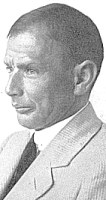 |
||
| Hugo von Hofmannsthal | Rainer Maria Rilke | Rudolf Kassner |
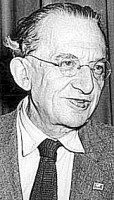 Lukács György |
Therefore, he might be called one of the most essential post-, even anti-impressionist theorists, although it must be expected, that not even his German-language oeuvres have been known to the extent, that this quality of him could have reached a real wide effect in the pre-war time. Also in him, that >>hatred of the relativity<< in the overcoming of the impressionism becomes constitutive, becomes constitutive in other prominent representatives of the 1910th generation such as in the young Hermann Broch. There is no doubt, that his resolute anti-impressionism plays also an important role in his further development. By the way, the image of the world as well of the young Hermann Broch as also of the young Robert Musil is related to this overcoming phase of the impressionist mode of thinking, even if – as it has also been the fact with Georg Lukács – the later and extremely complex evolution lets this grow together with many other contents and hardly lets discover the initial fundamental anti-impressionism. |
 Robert Musil |
The special historical and socio-historical position of the Austrian region leads then to phenomena, which have essentially a chance, after the Impressionism or its overcoming, to be considered, in a ever more recognized way, as specifically new and Austrian intellectual qualities. The just mentioned new spiritual structure consists in a strange duality: on the one side, it is about a philosophical reformulation, redefinition of the concrete. This element is revealing as a consequence of the positivism projected on the philosophy. On the other side, we find thus parallely a very strong consideration of the whole, so to speak, an extreme sense of holism. The last train is surely a need for the emergence of the universalism, deeply and tenaciously founding in the macrobite everyday thinking. In a somewhat simplified form, we say that the historical non-concomitance of the modern positivism and of the traditional universalism becomes, in a particular way, productive. The concrete is always redefined, this process is however always made in a definitive problematization of the whole. From both sides, the objective world is then simultaneously conceived philosophically.
This >>redefinition of the concrete under the constant consideration of the absolute<< becomes only predominant in the post-impressionist development. We must however also rely on aspirations that, either in the one (redefinition of the concrete) or in the other (problematization of the absolute) respect, were already of importance in the pre-impressionist period.
 |
| Fritz Mauthner |
In this context, Ernst Mach must be then quoted, whose positivist empirical criticism represents a legitimate and tangible concrete variant of the redefinition of the concrete and whose impact in this direction was absolutely innovative. The redefinition of the concrete has however a sense also in terms of language. In Fritz Mauthner, the language appears as a system of fateful anthropomorphization, which prevents us from comprehending the ’concrete’. This also means, that the language becomes the redefined ’concrete’ level in the knowledge of the reality. This new concrete is already going in him together with a new conception of the whole, with the positivistically motivated criticism it harmonizes in him the gnostic mysticism without any problem. The problem of the redefinition of the concrete is similarly put in Karl Kraus, in whom the language also leads into the private life. We could also formulate this so that the language can only be reproduced in Karl Kraus adequately only through a correct use of the language and the correctly used language be identical to the absolute.
In Franz Kafka, Ludwig Wittgenstein and Hermann Broch, we find the mature and post-impressionist variants of the redefinition of the concrete with the particular problematization of the absolute. Franz Kafka is the author, who makes literary most fully productive the concomitance and the interdependence, in him it is therefore also most visible, how both processes are also conceptually related. His heroes are struggling within a whole in order to recognize this whole as universal order.
They want also to get to know it, in order to attribute it to their existential problematic. This struggle involves however the constant redefinition of the concrete, what goes so far, that the hero can also appear in the form of a vermin.
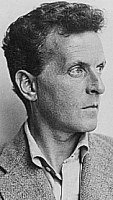 |
| Ludwig Wittgenstein |
Wittgenstein’s >>elementary sentences<< in Tractatus apply also as redefinition of the concrete, and there is also here no doubt, that they were intended as necessary steps to thematize the absolute, in any case however to decide of the possibility or impossibility of this thematization.
Finally, this thematization appears in Hermann Broch (amongst others) on the level of the values. The values are always redefined, while their struggle against each other also thematizes necessarily the whole and the absolute.
Is there then a Central-European thinking?
Our answer, as it seems to us, is clear. There is not only a Central-European thinking, there is rather an historically and sociologically homogeneous and consistent line of development of the Central-European thinking, a line of development, that also determines the coordination, within which only the diverse philosophical objectivations of this region can be adequately interpreted.
Publication
"Who thinks Central Europe ?" The Austrian intellectual history up to the First World War. In: Hegel’s Annals, 1992. Published by Heinz Kimmerle and Wolfgang Lefevre. Fernwald (Annerod), 1992. 169-176.
![]() FEL
FEL